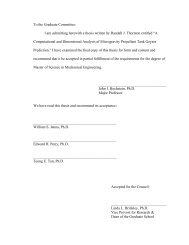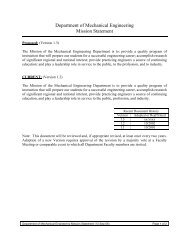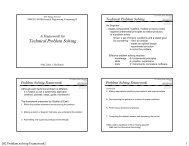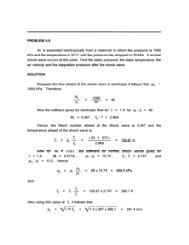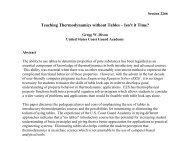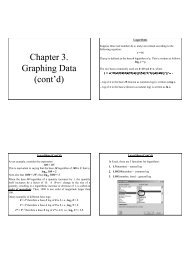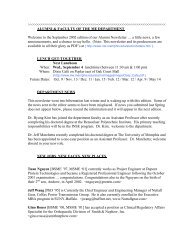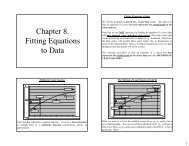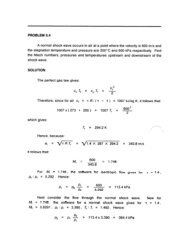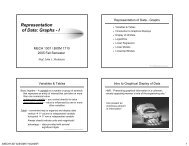MECHANICS of FLUIDS LABORATORY - Mechanical Engineering
MECHANICS of FLUIDS LABORATORY - Mechanical Engineering
MECHANICS of FLUIDS LABORATORY - Mechanical Engineering
You also want an ePaper? Increase the reach of your titles
YUMPU automatically turns print PDFs into web optimized ePapers that Google loves.
placed on the torque arm to reposition the motor<br />
to its balanced position. The product <strong>of</strong> weight<br />
and torque arm length gives the torque input from<br />
motor to fan.<br />
A tachometer is used to measure the<br />
rotational speed <strong>of</strong> the motor. The product <strong>of</strong><br />
torque and rotational speed gives the power input<br />
to the fan:<br />
dW a<br />
dt<br />
= Tω (17.2)<br />
This is the power delivered to the fan from the<br />
motor.<br />
The efficiency <strong>of</strong> the fan can now be<br />
calculated using Equations 1 and 2:<br />
η = dW/dt<br />
dW a /dt<br />
(17.3)<br />
Thus for one setting <strong>of</strong> the motor controller, the<br />
following readings should be obtained:<br />
1. An appropriate reading for the flow meter.<br />
2. Weight needed to balance the motor, and its<br />
position on the torque arm.<br />
3. Rotational speed <strong>of</strong> the fan and motor.<br />
4. The static pressure at section 2.<br />
With these data, the following parameters<br />
can be calculated, again for each setting <strong>of</strong> the<br />
motor controller:<br />
1. Outlet velocity at section 2: V 2 = Q/A 2 .<br />
2. The power using Equation 17.1.<br />
3. The input power using Equation 17.2.<br />
4. The efficiency using Equation 17.3.<br />
Presentation <strong>of</strong> Results<br />
On the horizontal axis, plot volume flow<br />
rate. On the vertical axis, graph the power using<br />
Equation 1, and Equation 2, both on the same set <strong>of</strong><br />
axes. Also, again on the same set <strong>of</strong> axes, graph<br />
total pressure ∆p t as a function <strong>of</strong> flow rate. On a<br />
separate graph, plot efficiency versus flow rate<br />
(horizontal axis).<br />
45



